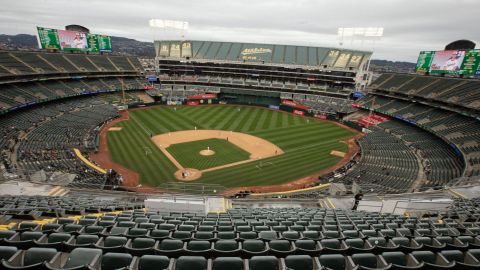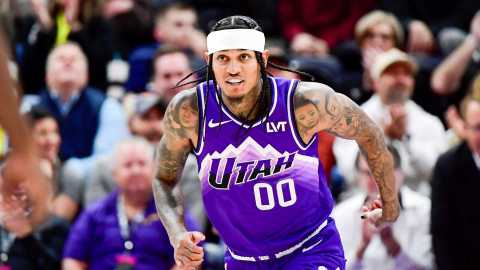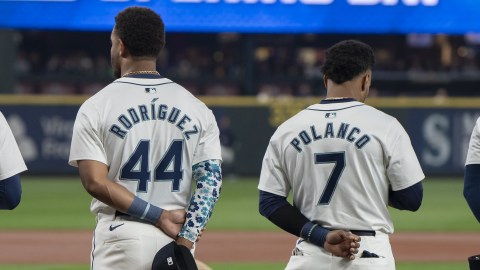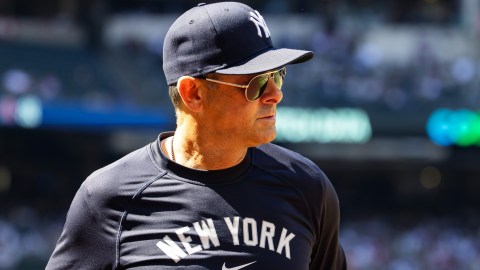Bud Selig nearly suffered a meltdown when his beloved All-Star Game ended in a 12-inning tie in 2002.
One can only imagine what the baseball commissioner is thinking now, after this year’s Midsummer Classic had the worst television ratings in history.
The All-Star Game in Anaheim earned a 7.5 fast national rating (percentage of homes with televisions watching) and 13 share (percentage of homes with TVs in use at the time), down 16 percent from the 8.9/15 score for last year’s game.
So what can explain the lack of interest in baseball’s grandest summer spectacle?
After all, Selig came up with the controversial idea to make the All-Star Game count for home-field advantage in the World Series after the 2002 debacle, partly to ensure that the game would never end in a tie but mostly to increase fan interest.
Apparently, that interest isn’t exactly peaking.
But the game counting for something other than pride among players probably doesn’t have much to do with low viewership.
The players involved in the game actually might have deterred the fans.
Seriously though, who wants to see guys like Omar Infante, Hong-Chih Kuo and John Buck take the field in a game that’s supposed to feature the best players in the world?
Part of the problem with fan interest in the All-Star Game is that while the game may actually mean something, the rosters are too big and many of the players are underqualified.
In April, Selig’s special committee for on-field matters decided to make a few changes to the game’s rules, including expanding the rosters to 34 players and allowing replacements for pitchers that pitched on Sunday before the game.
"Any time you can add people to the All-Star team it's good," Philadelphia Phillies and NL All-Star manager Charlie Manuel told The Associated Press in April.
Sorry, skip, you’re wrong.
The rosters are simply too big with 34 guys suiting up to take the field, and given the amount of players that are replaced due to injury, it seems like almost half the league is named to the All-Star team one way or another.
That’s why the fans don’t care. The rules that Selig and his cronies implemented in April were designed to protect players from getting hurt, but at the same time, Selig is trying to make the All-Star Game into something that it’s not supposed to be.
And what is the game supposed to be?
It should be a special event, where the best players in the world show off their greatest talents. Watching Tigers closer Jose Valverde strike out Astros center fielder Michael Bourn isn’t meaningful to anyone outside of Detroit or Houston. So why should a national audience care, just because it happens in the All-Star Game?
Major League Baseball should get back to its roots, and turn the game into something that makes the players really want to compete. Don’t put Albert Pujols and Matt Thornton in the same game and call it a showdown of the best in the world.
From 1969 to 1997, there were 28 players on each All-Star roster. And back then, especially in the earlier years, guys would even play hurt. And some guys would even hurt the opposing team, if it meant winning the ballgame. Pete Rose knew what the game was supposed to mean. Consequently, so did Ray Fosse.
There is certainly reason to combat that ideal. Nowadays, there is much more sensitivity about players getting hurt in exhibition games and pitchers overthrowing when they don’t have to.
Fair enough. But if you’re going to baby the players, don’t have the outcome mean anything.
Baseball should do what the NBA does, and make the All-Star Game into one giant skills competition. Instead of dunking, passing and three-point contests, MLB could have a fastest pitch, nastiest curve or quickest from first-to-third competition. Talk about players showcasing their skills.
And instead of acting like the game means anything, players should have some fun with it. John Kruk knew how to do that.
If Selig doesn’t figure this problem out fast, the All-Star Game is going to keep losing viewers with every shabby performance that Major League Baseball puts on every year in mid-July.
And getting Glee star Amber Riley to sing the national anthem certainly isn’t helping anything.



